Authentic Cacio e Pepe – 20 Minutes! (VIDEO)
This post may contain affiliate links. Please read our disclosure policy.
I love everything about Cacio e Pepe! It’s so simple and delicious, with only a handful of ingredients, and it comes together in 20 minutes. But it can be one of those dishes that is harder to replicate than you think – that’s why you need to include my secret FOOLPROOF step that helps me make the best Cacio e Pepe every time!
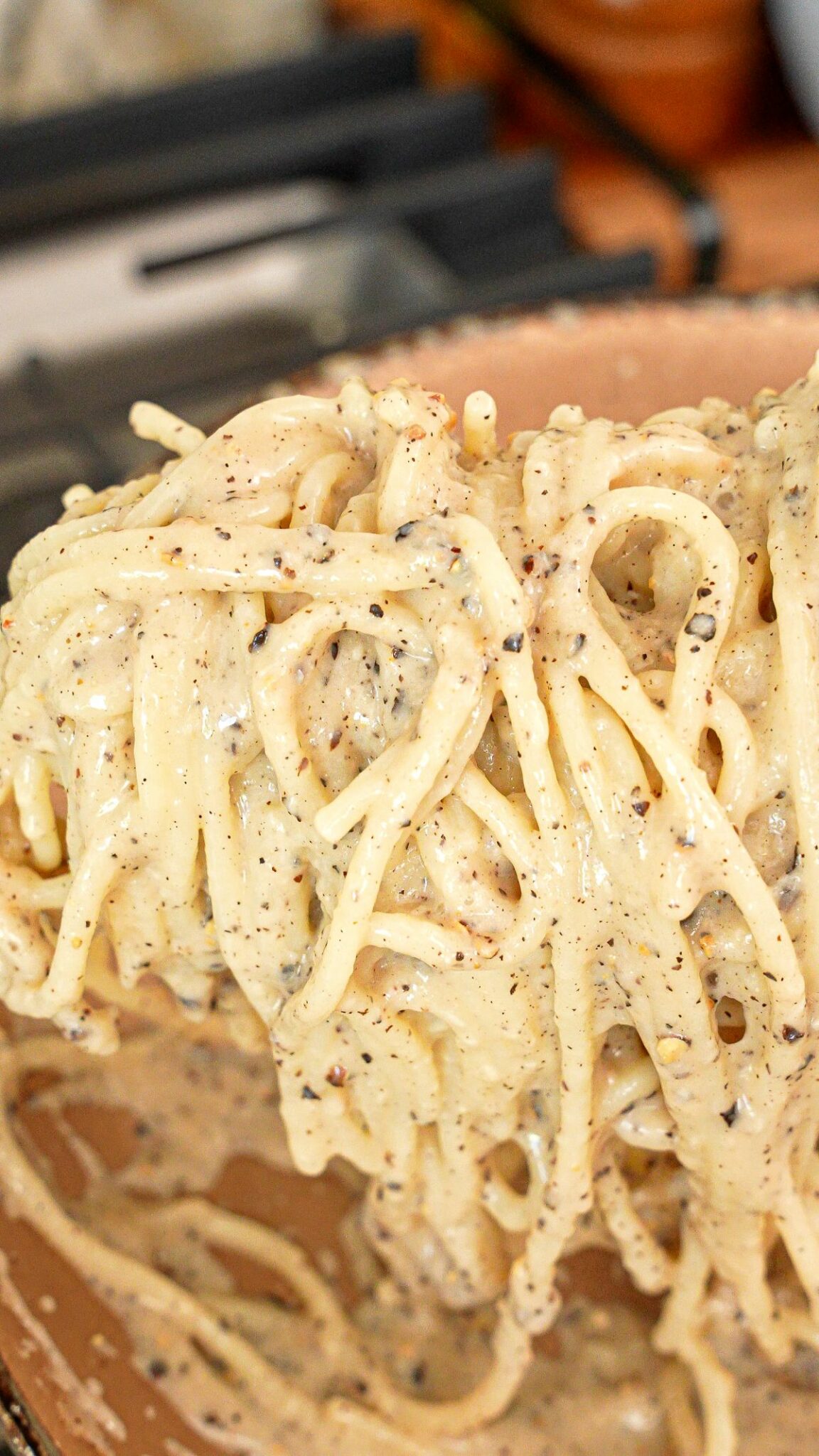
Watch the Cacio e Pepe Recipe Video!
A Note from CJ
My secret to perfect Cacio e Pepe EVERYTIME!

I have made Cacio e Pepe many times and I discovered one key tip that has helped me make it perfectly. Are you ready? Your pasta water needs to be cooled slightly to 150 degrees Fahrenheit or 70 degrees Celsius BEFORE mixing it into the sauce. Boiled pasta water is oftentimes TOO HOT – which results in the sauce becoming clumpy. A thermometer will be super helpful for this!
If you love Roman pastas like I do, make sure to try my Carbonara, Bucatini all’Amatriciana, and Pasta alla Gricia! Other favorite pastas are authentic Fettucine Alfredo, Linguine with Clams and Pasta al Limone!
It’s so easy to make, but yet very hard to master it. You are the only chef who mentioned the water temperature. Thanks!
Ingredient Tips
- Spaghetti: Cacio e Pepe is traditionally made with some kind of long pasta (noodle); I like to use spaghetti but I’ve also seen it with bucatini, linguine, fettuccine, or even short tubular pasta like rigatoni or mezze rigatoni. You can use either dry or fresh pasta – if using dry pasta, try bronze-cut pasta, which will cling to the sauce better!
- Pecorino Romano Cheese: I like to use a microplane to finely grate the cheese. I don’t recommend using pre-grated cheese, as they are usually coated with preservatives to keep the shreds from melting and clumping together, which is not ideal for emulisfying the sauce. You can substitute parmesan reggiano for the pecorino but you may need to add more salt to taste (as parmesan reggiano is less salty than pecorino.)
- Whole Black Peppercorns: I recommend dry toasting the whole black peppercorns before grinding them – dry toasting enriches the aroma and brings an extra layer of smokiness and spiciness that will truly enhance your Cacio e Pepe!
How to Make Authentic Cacio e Pepe
Toast black peppercorns, grate the cheese, and cook the pasta: First, toast the black peppercorns in a pan until fragrant over medium high heat until fragrant. Turn the heat off, then coarsely grind the peppercorns in a mortar before returning them to the pan. Finely grate Pecorino cheese with a microplane and add it to the pepper once the pan is cool to the touch. Meanwhile, cook pasta until al dente, reserving a cup of starchy pasta water halfway through the cooking process and allowing it to cool to about 150°F (70°C).
Form the Cacio e Pepe sauce and finish the pasta: To form the sauce, gradually add the cooled pasta water to the pan with ground pepper and cheese, mixing vigorously with the cheese and pepper until smooth and emulsified. Drain and slightly cool the pasta before combining it with the sauce to prevent clumping, then toss until well-coated. If needed, adjust the consistency by adding more pasta water, and finish by serving the Cacio e Pepe in warmed bowls.
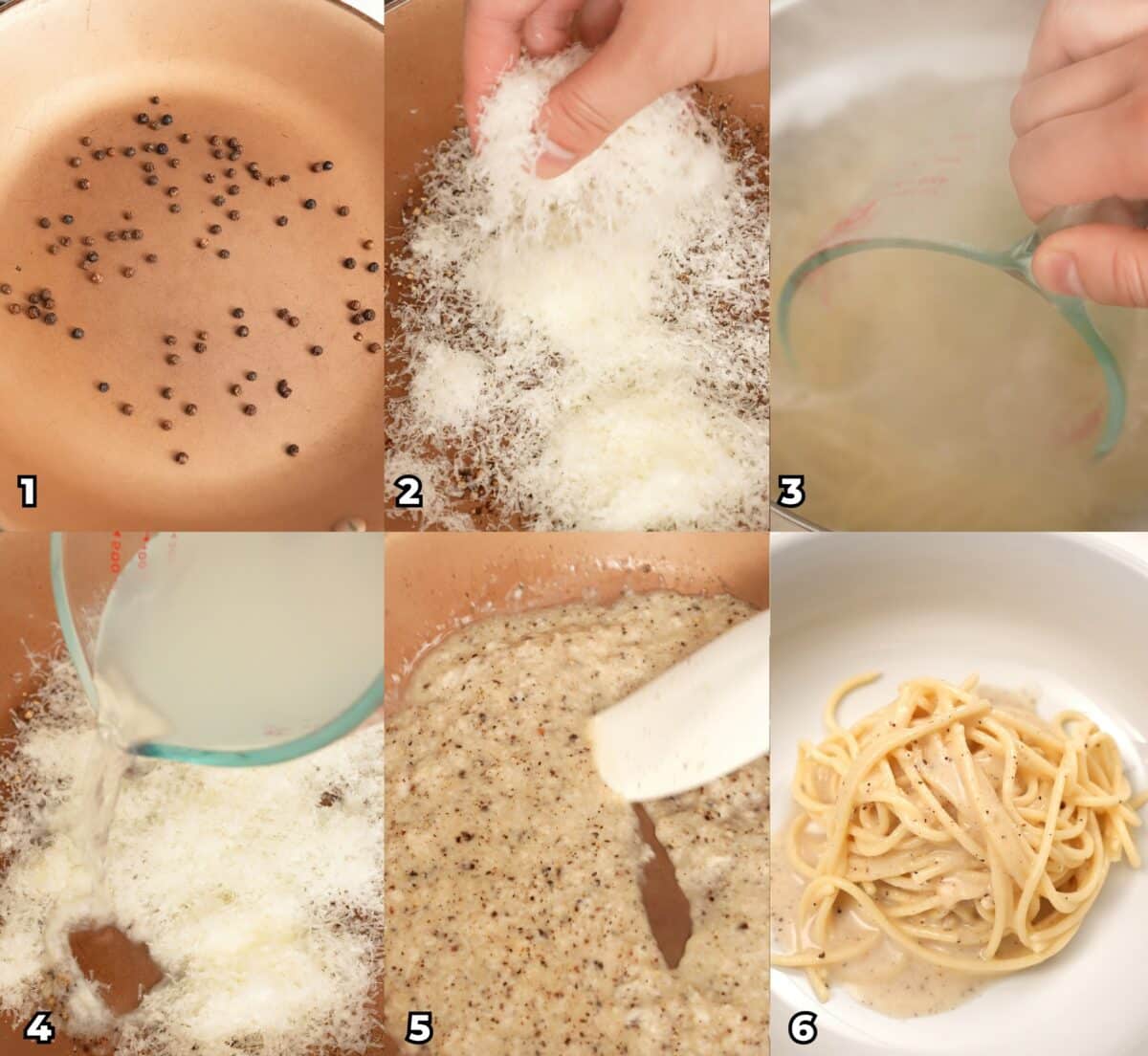
If you tried this Cacio e Pepe or any other recipe on my website, please leave a 🌟 star rating and let me know how it went in the comments below!
Authentic Cacio e Pepe (VIDEO)
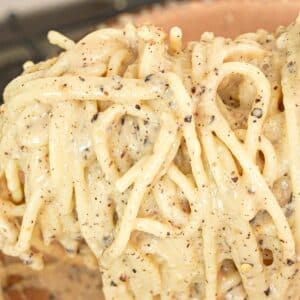
Equipment
Ingredients
- 8 oz spaghetti, dried pasta weight
- 2 oz pecorino cheese, grated
- 1 cup reserved pasta water, cooled to 150F (70C), used as needed to achieve an emulsified sauce in step 3
- 1/2 tbsp whole black peppercorn
Instructions
- Toast whole peppercorns over medium high heat for 2-3 minutes until the peppercorns are toasted and fragrant. Transfer to a pepper grinder or mortar and pestle and grind to a medium coarse grind. Add back to your pan with the heat off.
- Cook your spaghetti (or pasta of choice) in lightly salted water. 2 minutes before the pasta is done, reserve 1 cup of pasta water and set on the counter to let cool to about 150F or 70C – this is the key to avoiding lumpy cheese! Adding pasta water straight from the pot is much too hot.
- While the heat is off and the pan is cool to the touch, add the grated cheese to the peppercorns along with a 1/4 cup of the cooled pasta water at a time, stirring until you get a loose but emulsified sauce.
- Add your drained pasta and mix vigorously. At this point your pasta should start to absorb the sauce, but add additional pasta water and mix if the sauce is too thick. Continue mixing until you achieve the correct consistency (refer to video). Serve immediately into warmed bowls and enjoy!
Video
Notes
Nutrition
Nutrition information is automatically calculated, so should only be used as an approximation.

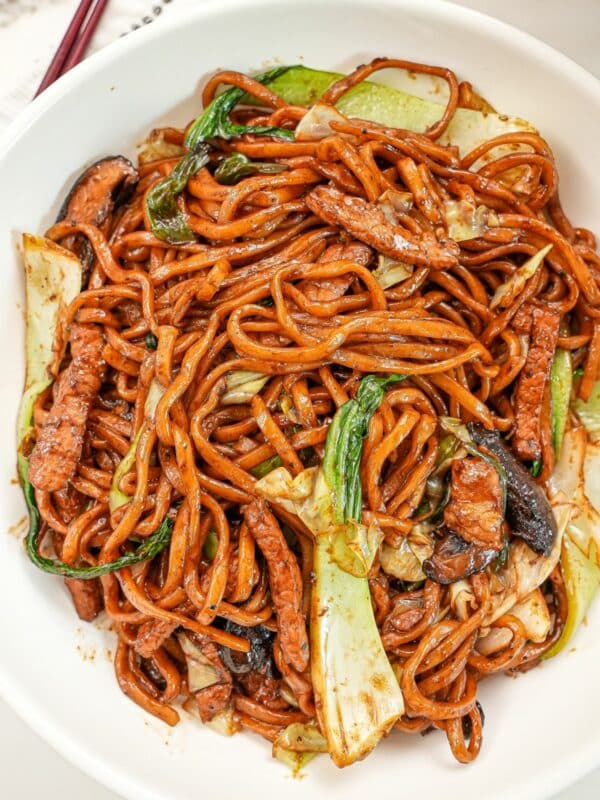
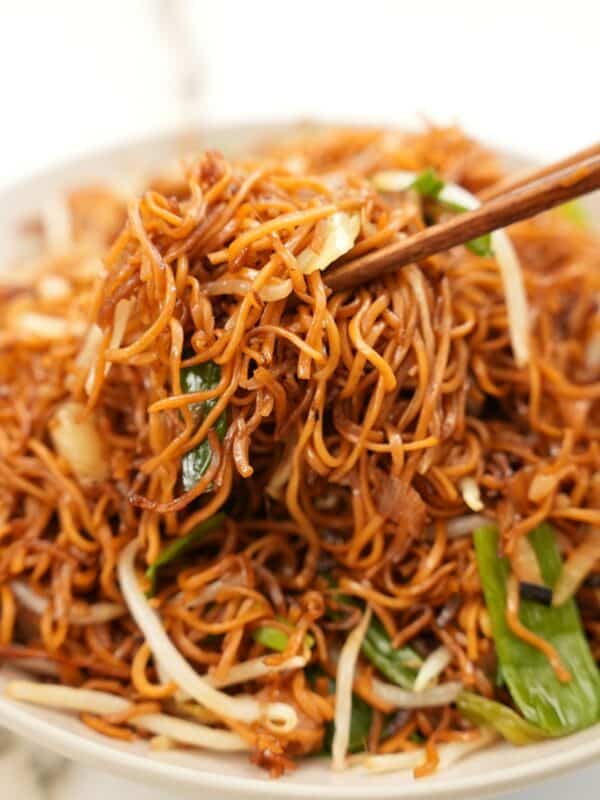
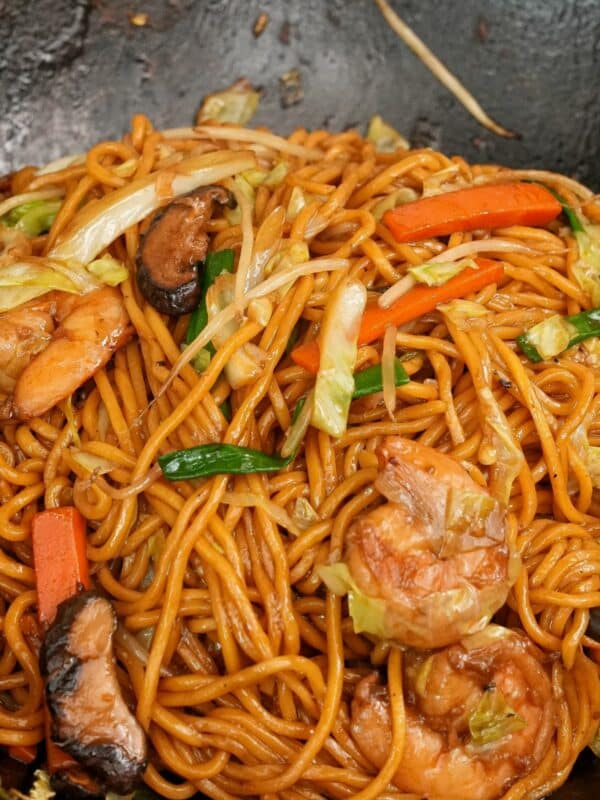
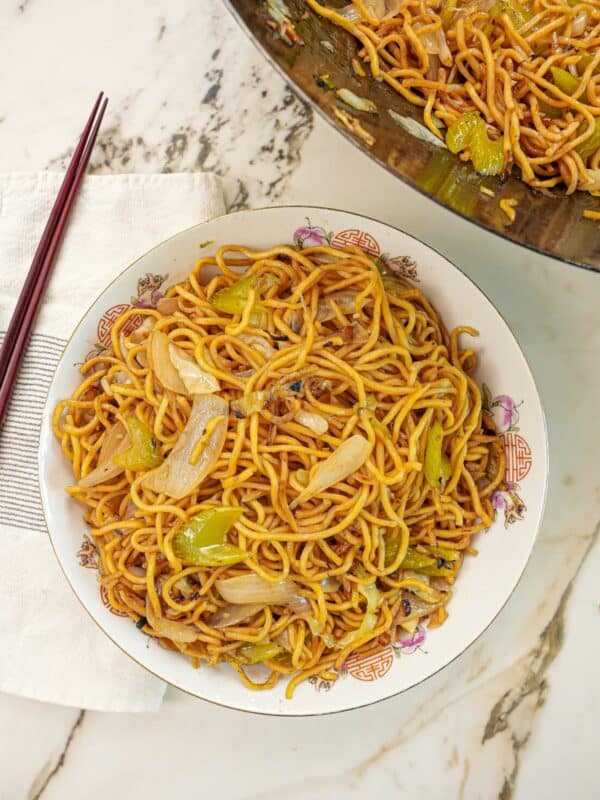







Great recipe with importa t insights, for example temperature of pasta water to mix in. One minor correction;Cacio e Pepe means cheese and black pepper, not cheese and pasta.
Oops that was definitely a typo – thanks so much Jesse!
It’s so easy to make, but yet very hard to master it. You are the only chef who mentioned the water temperature. Thanks
Now I know what when wrong when I tried to make Cacio e Pepe last time, I used pre-shredded cheese and my pasta water was nearly boiling. I will try again with this recipe.
FYI, shredded cheese does not have preservatives to prevent sticking, preservatives are to prolong shelf life, shredded cheese does have cellulose(wood fiber) added to keep the shredded pieces from clumping together.